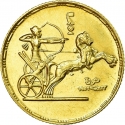You are about to finish your registration. Please check your mailbox (including spam folder). There should be a letter with a confirmation link. Check setting to make sure that your e-mail address is correct.
Send letter againDescription
The Egyptian revolution of 1952, also known as the 1952 Coup d'état or 23 July revolution, began on 23 July 1952, by the Free Officers Movement, a group of army officers led by Mohammed Naguib and Gamal Abdel Nasser to overthrow King Farouk and the Muhammad Ali Dynasty, and aimed at changing the political leadership in Egypt.
However, the movement had more political ambitions and soon moved to abolish the constitutional monarchy and aristocracy of Egypt and Sudan, establish a republic, end the British occupation of the country, and secure the independence of Sudan (previously governed as an Anglo-Egyptian Sudan). The revolutionary government adopted a staunchly nationalist, anti-imperialist agenda, which came to be expressed chiefly through Arab nationalism, and international non-alignment.
The revolution is commemorated each year on 23 July.
Coins were struck in yellow and red gold.
Obverse

|
Depicts pharaoh Ramesses II driving a war chariot. Inscription "Egypt" with hieroglyphic letters above, and "Revolution July 23 of 1952" in Arabic below. ثورة |
|---|---|
Reverse

|
Depicts mirrored vulture wings and Egyptian cobra heads (symbols of Ancient Egypt) flanking the disk of the sun (God Amun Ra). The country name (Republic of Egypt), value and dates (Hegira and Gregorian) above. جمهورية مصر |
| Edge |
Related coins
3rd Anniversary of the Egyptian Revolution of 1952



